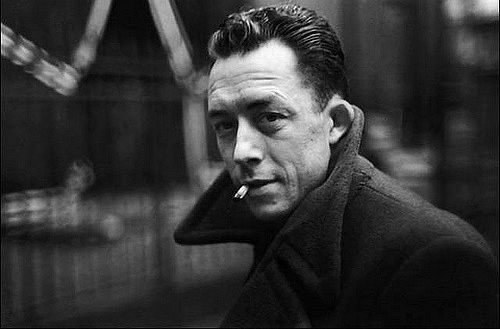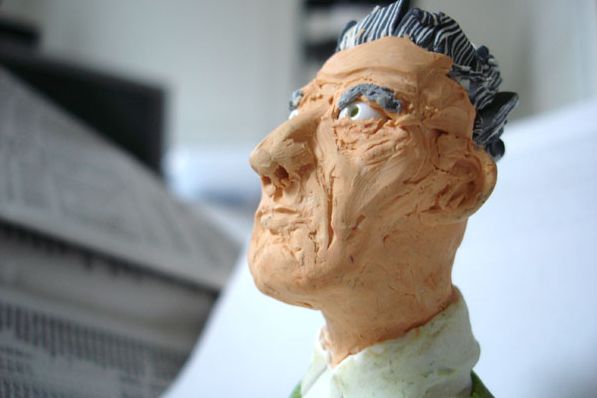Theater of the Absurd – Definition, Development and Legacy
Contents
What is the theater of the absurd?
Theater of the absurd, was a theater of dramatic works of certain European and American playwrights of the 1950s and early 60s that according to the existentialist assessment of Albert Camus philosopher, in his essay “The Myth of Sisyphus” (1942), is essentially absurd human situation, devoid of purpose. The term is also loosely applied to playwrights and the production of those plays.
Although no formal absurdist movement existed as such, playwrights as disparate as Samuel Beckett, Eugene Lonesco, Jean Genet, Arthur Adamov, Harold Pinter, and a few others share a pessimistic view of humanity struggling in vain to find purpose and to control its destiny. Humanity in this view is left feeling hopeless, bewildered and anxious.
Theater of the absurd refers to a literary movement in popular drama in European countries from the 1940s to about 1989. Playwrights of the absurd adhered to the theories of the French Algerian philosopher Albert Camus, in particular his essay The Myth of Sisyphus, published in 1942.
In this essay, Camus introduced his philosophy of the absurd, in which he argues that man’s search for meaning and truth is a futile endeavor; he compares man’s struggle to understand the world and the meaning of life to Sisyphus, a famous figure in Greek mythology condemned to an existence of rolling a heavy stone up a mountain only to see it roll away at the bottom.
Critics believe that the theater of the absurd emerged as a movement out of the doubts and fears surrounding World War II and what many people saw as the degeneration of traditional moral and political values.
The movement flourished in France, Germany and England, as well as in the Scandinavian countries.
In this sense, the theater of the absurd relates to a drama in which conventional norms and dramatic structure are ignored and modified to present life as irrational and insignificant.
Definition of the Theater of the Absurd
The Theater of the Absurd comprises a body of work written by certain American and European playwrights in the 1940s, 1950s, and 1960s, and generally grew out of the work of these playwrights. The ideas that inform the theater of the absurd also determine its structure. For the playwrights of the absurd did away with most of the logical structures of traditional theater.
There is unconventional dramatic action understood in this theater. However, the frenetic way in which the characters go about their business serves to underline the fact that nothing happens to change their existence. In Beckett Waiting for Godot (1952), the plot is removed and a circular timeless quality emerges, with lost creatures, generally acting as wanderers, who spend their days waiting, but without any certainty as to what they are waiting for and whether the one they are waiting for will ever arrive.
How did the Theater of the Absurd develop?
The language in the performance of the theater of the absurd is often dislocated, full of clichés, wordplay, repetition and non sequiturs. The characters in Ionesco Calvo’s Soprano (1950) sit and talk, repeating the obvious until it sounds absurd, thus revealing the inadequacies of verbal communication. The ridiculous, purposeless behavior and speech give a sometimes dazzling comic surface, but nevertheless, there is a serious message of metaphysical anguish.
This reflects the influence of the comic tradition drawn from sources such as comedy, combined with theater arts such as mime and acrobatics. At the same time, the impact of ideas expressed by the existentialist, surrealist and expressionist schools on Franz Kafka’s writings is evident.
Originally striking in its mockery of theatrical and popular convention and its expression of 20th century concerns, the theater of the absurd declined in the mid-1960s and some of its innovations became absorbed into mainstream theater even as it served to inspire other experiments. Some of the main authors of the theater of the absurd have sought new directions in their art, while others continue to work along the same lines.
On the other hand, the theater of the absurd is considered a short-lived but significant theatrical movement centered in Paris in the 1950s. Unusual in this case was the absence of a single practitioner spearheading the form. Largely this theater is based on the philosophy of existentialism, Absurdism was implemented by a small number of European playwrights.
So, too, common elements include illogical plots inhabited by characters who appeared out of harmony with their own existence. The typical actor had never seen anything like it on stage before. Thus, the theater of the absurd will be remembered in history for many things, the most important masterpiece being Samuel Beckett’s Waiting for Godot, one of the great plays of the 20th century. The following are the main conventions of the theater of the absurd.
• It is not an exponent of the conscious movement
• Its creation was realized by a disconnected group of playwrights whose term was first coined by the scholar Martin Esslin in his 1961 text the theater of the absurd playwrights.
• The truly absurdists are few in number: Samuel Beckett, Eugene Ionesco and Jean Genet (with some scholars including Arthur Adamov).
• Other playwrights whose plays have been labeled absurd by others include Harold Pinter, Edward Albee, Tom Stoppard, Fernando Arrabal, and Peter Weiss (he denies the label of absurdist playwright).
• The principles of absurdism are at the forefront and there are experiments from the 1920s and 30s. While some discuss elements of the absurd in works such as Alfred Jarry’s Ubu Roi (1896) and even in ancient Greek dramas.
• The theater of the absurd is the opposite of the so-called absurdism, therefore, absurd originally means “out of harmony” (in a musical context), so, its meaning in the theater of the absurd is different from the meaning of the everyday word as absurd “ridiculous” which in the context of absurdism means: purposeless, illogical, useless, devoid of reason, meaningless, meaningless, hopeless, chaotic, lacking in harmony, of uncertain order, of lie, basically absurdism is the concept of existentialism of existentialist philosophers who influenced the playwrights of the absurd and who were the French: Jean-Paul Sartre (1905-1980) and Albert Camus (1913-1960), both also playwrights.
What is the legacy of the Theater of the Absurd?
One of the legacies of the theater of the absurd is the construction of existentialism, which refers to a particular vision of the nature of human existence. Existentialism considers that man begins life with nothing. His life is composed of acts, and through the process of acting man becomes conscious of his original nothingness. By choosing to act, man passes into the realm of human responsibility that makes him the creator of his own existence. However, existence inevitably ends with death.
Therefore, according to existentialism, Man returns to his original state of nothingness. This existential notion eliminates the Western concept of the exalted nature of Man. Therefore, life becomes meaningless and useless, in a condition that in essence is “absurd”. Therefore, man’s only freedom in this state is the exercise of his conscious mind. However, consciousness implies conflict between man’s awareness of the absurdity of his existence and his need for justification of his human action. (J. L Crawford: acting in person and in style).
Hence, the atrocities of World War II are considered influential events for the movement, highlighting the precariousness of human existence. Sartre denies the existence of a God, seeing human beings with no choice to create their own norms and moral code in life (instead of accepting norms offered by church, state or society).
Thus, in his book essay The Myth of Sisyphus, Camus sees Sisyphus endlessly pushing a rock to the top of a mountain, only to see it roll to the bottom again, this futile labor an analogy of man’s meaningless existence, a quality seen in various characters and plots of the theater of the absurd.
Who are the main representatives of the Theater of the Absurd?
Several of the founding works of the movement are Jean Genet’s The Maids (1947), Eugene Ionesco’s The Bald Soprano (1950), Arthur Adamov’s Table Tennis (1955) and Samuel Beckett Waiting for Godot (1953). Beckett’s death in 1989 is said to mark the close of the movement’s popularity.


